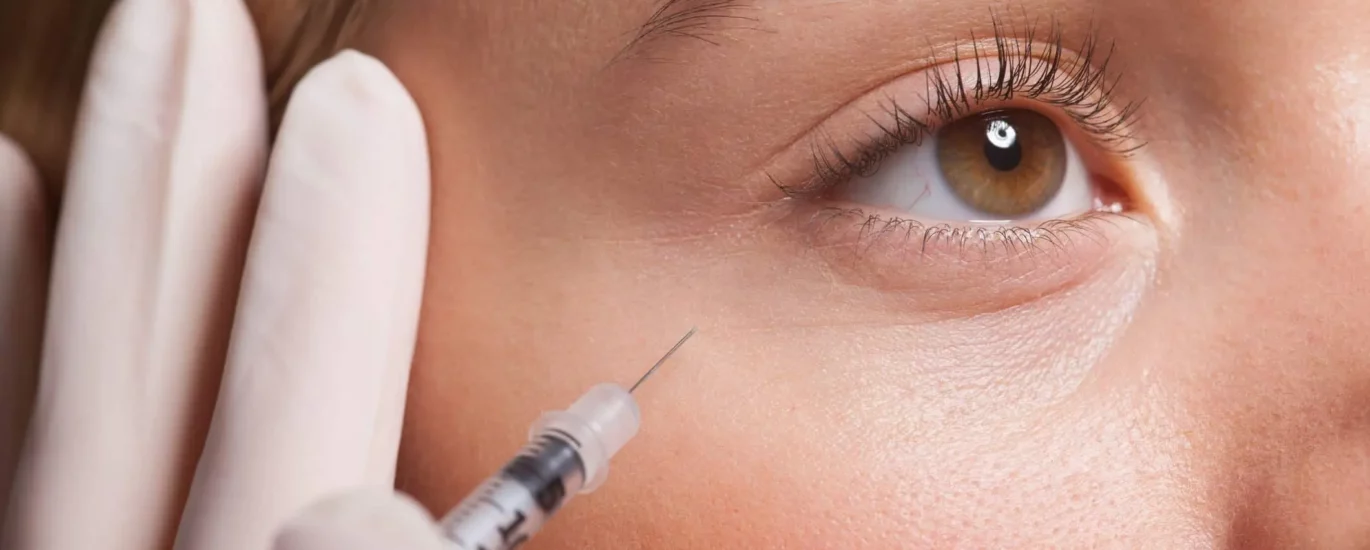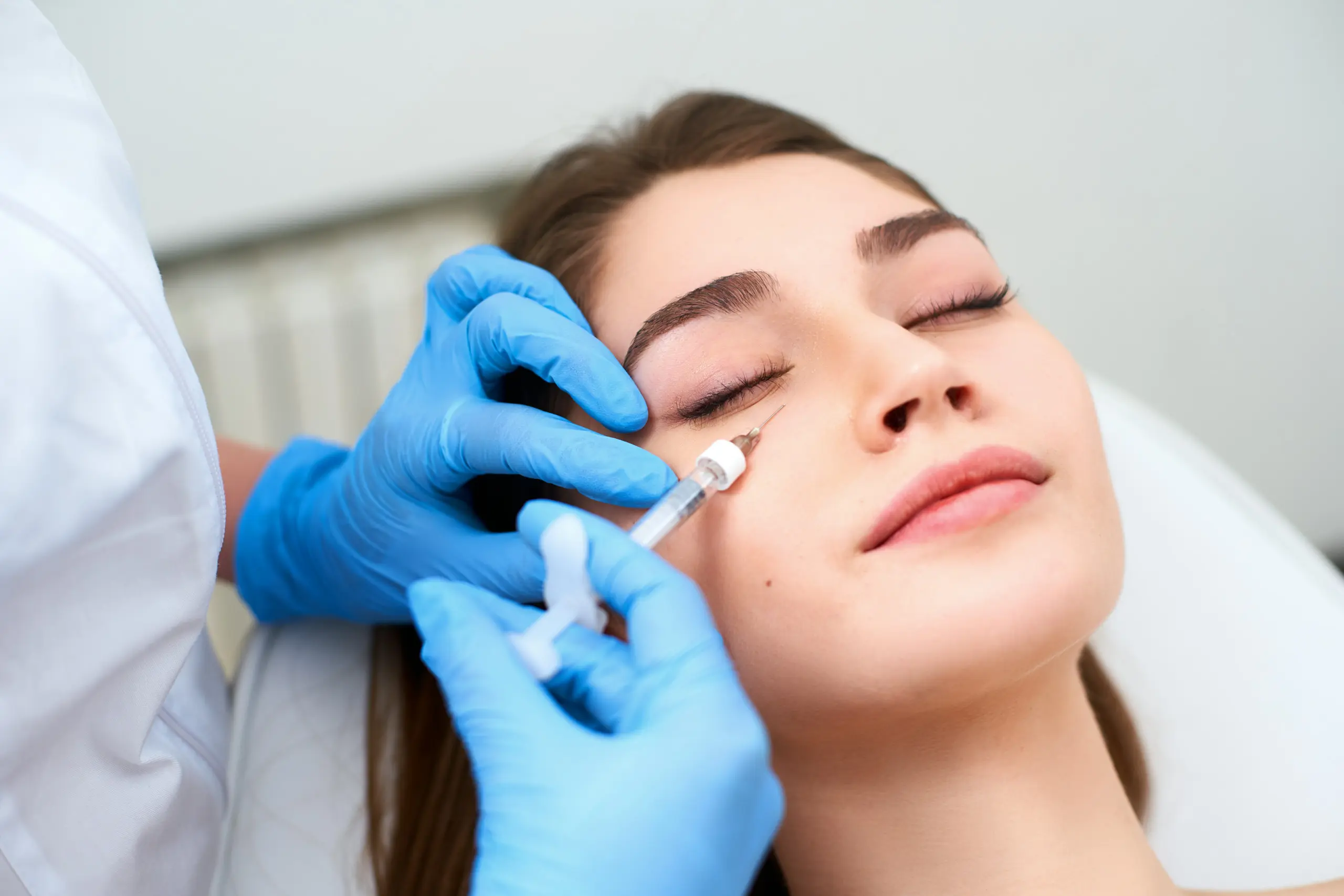


Under eye fillers, also known as tear trough fillers, have gained significant popularity in recent years as a non-surgical solution for addressing various cosmetic concerns around the delicate under eye area. These injectable treatments are designed to rejuvenate and enhance the appearance of the under eye region, providing a refreshed and more youthful look. The under eye area is prone to showing signs of aging, such as dark circles, hollows, fine lines, and wrinkles. Factors like genetics, sun exposure, lifestyle choices, and the natural aging process can contribute to the development of these concerns. Under eye fillers offer a minimally invasive approach to combatting these issues without the need for surgery.
The primary purpose of under eye fillers is to restore volume, smooth out wrinkles, and improve the overall contour of the under eye area. By injecting a carefully selected filler material into the targeted areas, the appearance of hollowness and shadows can be diminished, resulting in a more vibrant and rested appearance. The increasing popularity of under eye fillers can be attributed to several factors. First and foremost, their non-surgical nature appeals to individuals who are seeking cosmetic enhancements without the associated risks and downtime of invasive procedures. Additionally, advancements in filler technology and injection techniques have made under eye fillers more precise and natural-looking, further boosting their popularity.
Moreover, the growing awareness and acceptance of aesthetic treatments have contributed to the rising demand for under eye fillers. Many individuals are now actively seeking ways to address their under eye concerns and are turning to fillers as a safe and effective option. The visible results achieved with under eye fillers have made them a sought-after choice for those who desire a more youthful and rejuvenated appearance.
Under eye fillers are cosmetic treatments specifically designed to address various concerns in the under eye area. These fillers, also known as tear trough fillers, are injectable substances that help improve the appearance of dark circles, hollowness, fine lines, and wrinkles. Under eye fillers are gel-like substances that are injected into the targeted areas beneath the eyes. They are typically made up of hyaluronic acid (HA), a naturally occurring substance in the body that helps retain moisture and provide volume. HA fillers are the most commonly used type of under eye filler due to their safety and effectiveness. Other types of fillers, such as collagen-stimulating fillers, may also be used in certain cases.
Under eye fillers work by restoring volume and smoothing out the skin in the under eye area. When injected strategically, they can fill in hollows, minimize the appearance of dark circles, and soften wrinkles. The filler material provides support and hydration, resulting in a more rejuvenated and refreshed look. The primary ingredient in most under eye fillers is hyaluronic acid. This naturally occurring substance has the ability to attract and hold water, which helps plump up the treated area. By replenishing lost volume and improving hydration, HA fillers can significantly reduce the appearance of under eye concerns.
In addition to hyaluronic acid, under eye fillers may also contain other beneficial ingredients such as lidocaine, a local anesthetic that helps minimize discomfort during the injection process. Some fillers may also incorporate antioxidants and vitamins to further promote skin health and rejuvenation.
The natural aging process plays a significant role in the longevity of under eye fillers. As we age, our skin gradually loses its elasticity and collagen production decreases. These changes can affect how long fillers last in the under eye area. Older individuals may experience faster filler breakdown and absorption due to the reduced ability of the skin to retain the injected product. It is important to manage expectations and understand that older individuals may require more frequent touch-up treatments to maintain the desired results.
Different types of fillers have varying durations of effectiveness. Hyaluronic acid (HA) fillers, such as Restylane and Juvederm, are commonly used for under eye treatments. These fillers generally provide temporary results that can last anywhere from 6 to 12 months. The duration may vary depending on factors such as the specific HA filler used, the amount injected, and individual variations.
On the other hand, there are semi-permanent or permanent fillers that offer longer-lasting results. Calcium hydroxylapatite (CaHA) fillers, such as Radiesse, stimulate collagen production and can last for about 12 to 18 months. Poly-L-lactic acid (PLLA) fillers, like Sculptra, stimulate collagen synthesis and may provide results that can last up to 2 years. However, it’s important to note that the longevity of semi-permanent and permanent fillers can also depend on individual factors.
Everyone’s metabolism and lifestyle choices can be different for how long under eye fillers last. A faster metabolism can potentially lead to quicker filler breakdown and absorption, reducing their longevity. Lifestyle factors such as smoking and excessive alcohol consumption can also impact filler durability. Smoking can decrease collagen production which can contribute to the breakdown of fillers. Conversely, maintaining a healthy lifestyle with proper nutrition, regular exercise, and adequate hydration may help extend the life of under eye fillers.
You should take certain precautions to optimize the lifespan of under eye fillers. Sun exposure can accelerate the breakdown of fillers, so it is crucial to protect the under eye area from harmful UV rays by wearing sunscreen and using sunglasses. Smoking not only affects filler longevity but also hampers overall skin health, so quitting smoking is advisable. Additionally, following a skincare routine recommended by a professional can help maintain the quality and longevity of fillers. Gentle cleansing, moisturizing, and avoiding harsh chemicals around the treated area are essential for preserving the results.
People use Hyaluronic acid (HA) fillers in a wide quantity under eye treatments due to their safety and effectiveness. The duration of HA fillers can vary depending on factors such as the specific brand, the concentration of hyaluronic acid, and individual variations. On average, under eye fillers made of hyaluronic acid can last between 6 to 12 months.
Some commonly used HA fillers for under eye treatments include Restylane and Juvederm. These fillers are formulated with a smooth gel consistency, specifically designed for the delicate under eye area. They provide an immediate plumping effect, reducing the appearance of dark circles, hollowness, and fine lines. Over time, the body gradually absorbs the hyaluronic acid, leading to a gradual fading of the filler’s effects.

Apart from hyaluronic acid fillers, there are other types of fillers that can be used for under eye treatments, such as calcium hydroxylapatite (CaHA) and poly-L-lactic acid (PLLA).
Calcium hydroxylapatite fillers, such as Radiesse, are made up of calcium microspheres filled in a gel carrier. These fillers not only provide immediate volume but also stimulate collagen production, leading to long-lasting results. Under eye fillers made of calcium hydroxylapatite can last around 12 to 18 months, depending on the individual and the amount injected. The gradual breakdown of the filler is accompanied by the natural synthesis of collagen, providing structural support to the under eye area.
Poly-L-lactic acid fillers, like Sculptra, are unique in that they stimulate the production of collagen over time. The results of PLLA fillers are not immediate, as the collagen-building process takes place gradually. While the initial effects may diminish within a few months, the collagen synthesis can continue for up to 2 years. The longevity of Sculptra and other PLLA fillers depends on individual factors, including the number of treatments and the body’s response to collagen stimulation.
Follow-up Treatments: To maintain the desired results of under eye fillers, follow-up treatments are crucial. The longevity of under eye fillers can be extended by scheduling regular touch-up sessions as recommended by your doctor. These sessions allow the provider to assess the condition of the fillers, make any necessary adjustments, and ensure that the under eye area continues to look refreshed and rejuvenated. Follow-up treatments also give an opportunity to address any new concerns or changes in aesthetic goals, allowing for personalized adjustments to be made.
Proper skincare routines play a vital role in optimizing and extending the life of under eye fillers. It is essential to gently care for the treated area to maintain the quality and longevity of the fillers. Here are some tips for an effective skincare routine:
Certain lifestyle adjustments can help preserve the effects of under eye fillers and promote overall skin health. Consider the following suggestions:
Read Also: Know About Acne And Different Remedies To Reduce Acne Scars
Under-eye fillers have gained tremendous popularity as a non-surgical solution for improving the appearance of the under-eye area. These injectable treatments, often composed of hyaluronic acid (HA) or other filler materials, offer a safe and effective way to address concerns such as dark circles, hollowness, and wrinkles.
Throughout this article, we have explored various aspects of under-eye fillers, including their purpose, increasing popularity, understanding of the treatment, factors affecting their longevity, expected duration, and maintenance of results. By understanding these factors, individuals can make informed decisions about under-eye filler treatments and have realistic expectations about their outcomes.
Factors such as age, metabolism, lifestyle choices, and underlying health conditions can influence the duration of under-eye fillers. Additionally, the choice of filler material, its formulation, and the injection technique employed by a skilled healthcare provider can impact the longevity of results. By considering these factors and practicing good skincare habits, individuals can help extend the duration of their under-eye filler results.
Under-eye fillers are not permanent and will eventually be naturally metabolize by the body. Regular follow-up appointments and maintenance treatments may be necessary to sustain the desired results over time. Consulting with a qualified healthcare professional is crucial for personalized advice and guidance throughout the treatment process.
Under-eye fillers offer a convenient and effective option for those seeking to rejuvenate their under-eye area without undergoing surgery. By enhancing volume, reducing the appearance of dark circles, and smoothing out wrinkles, these fillers can provide a more refreshed and youthful look.